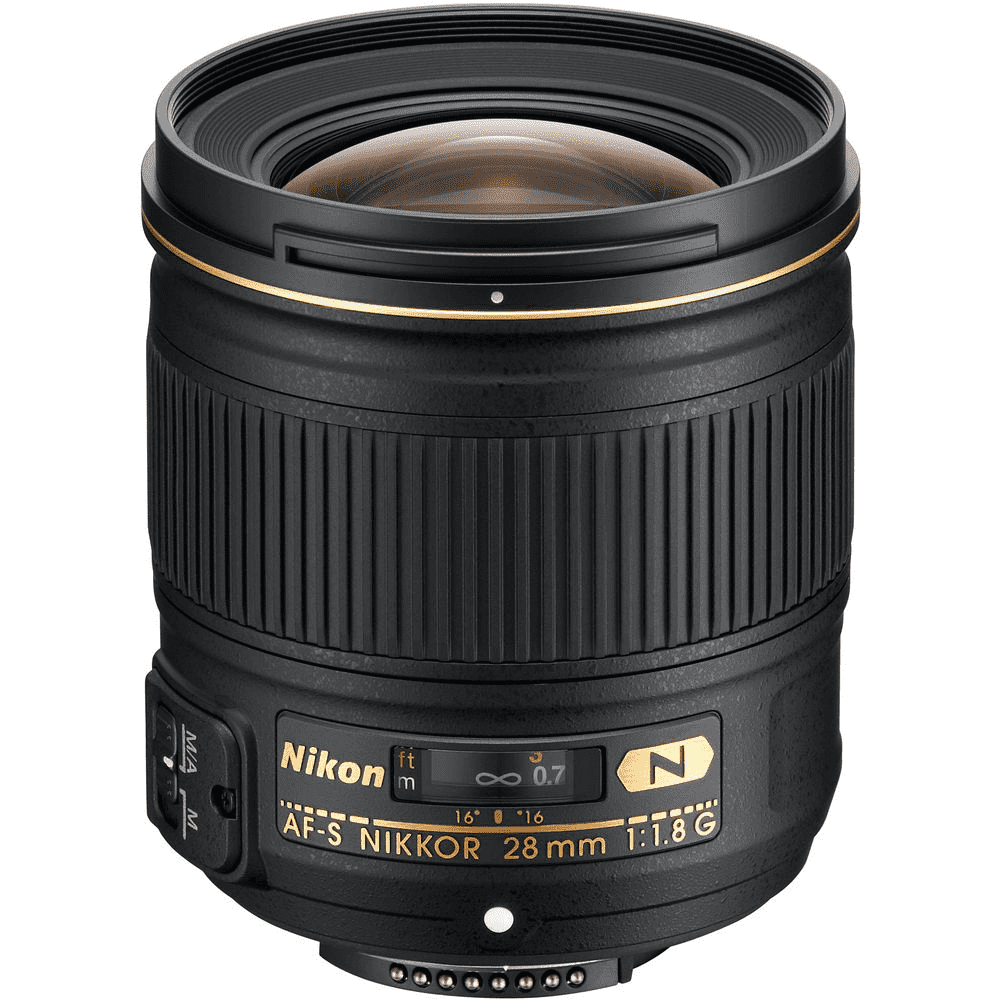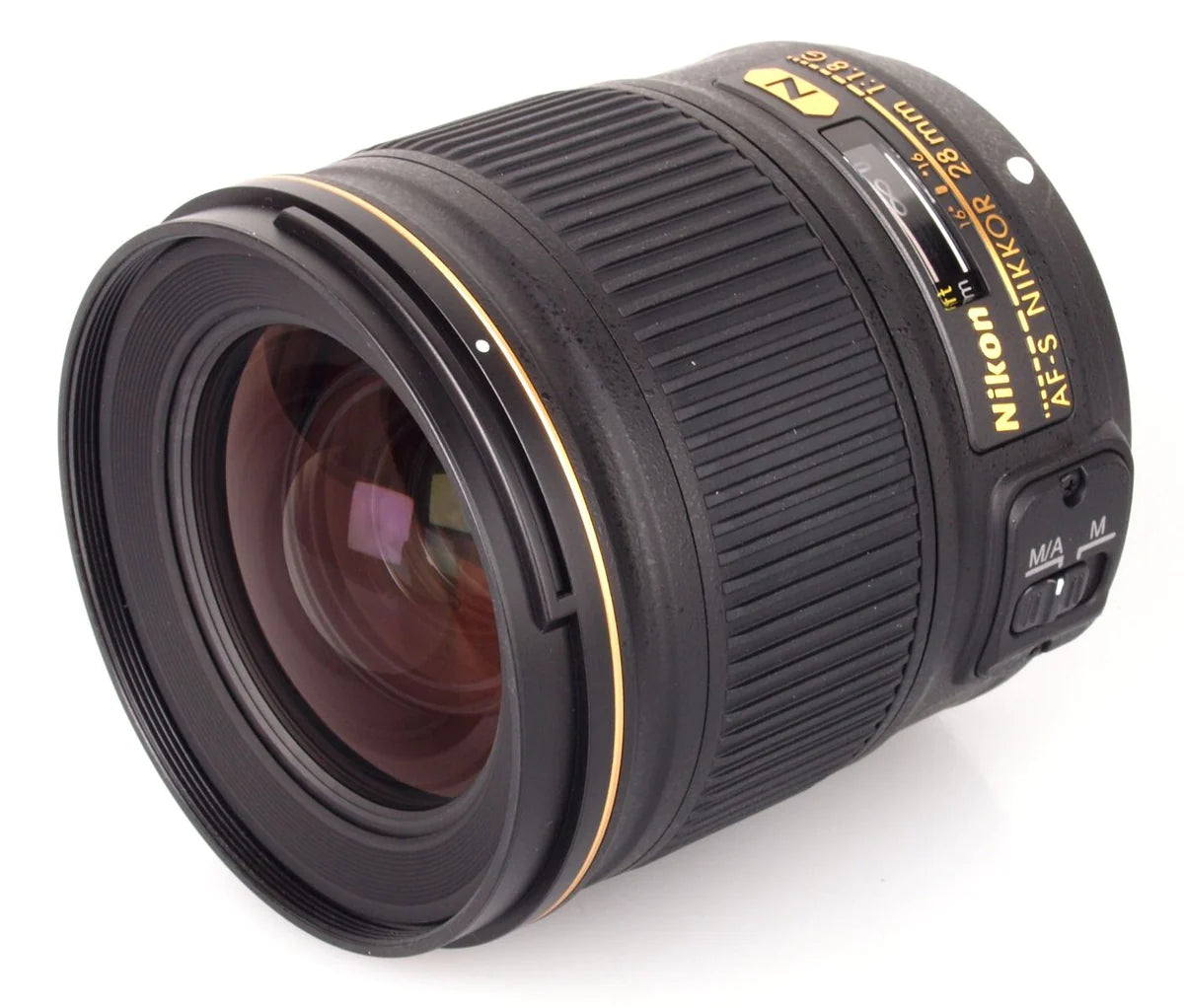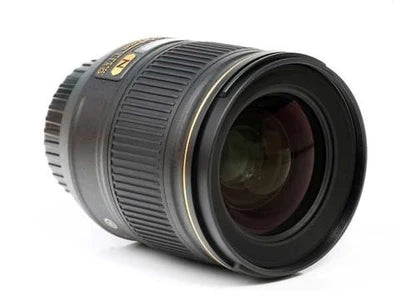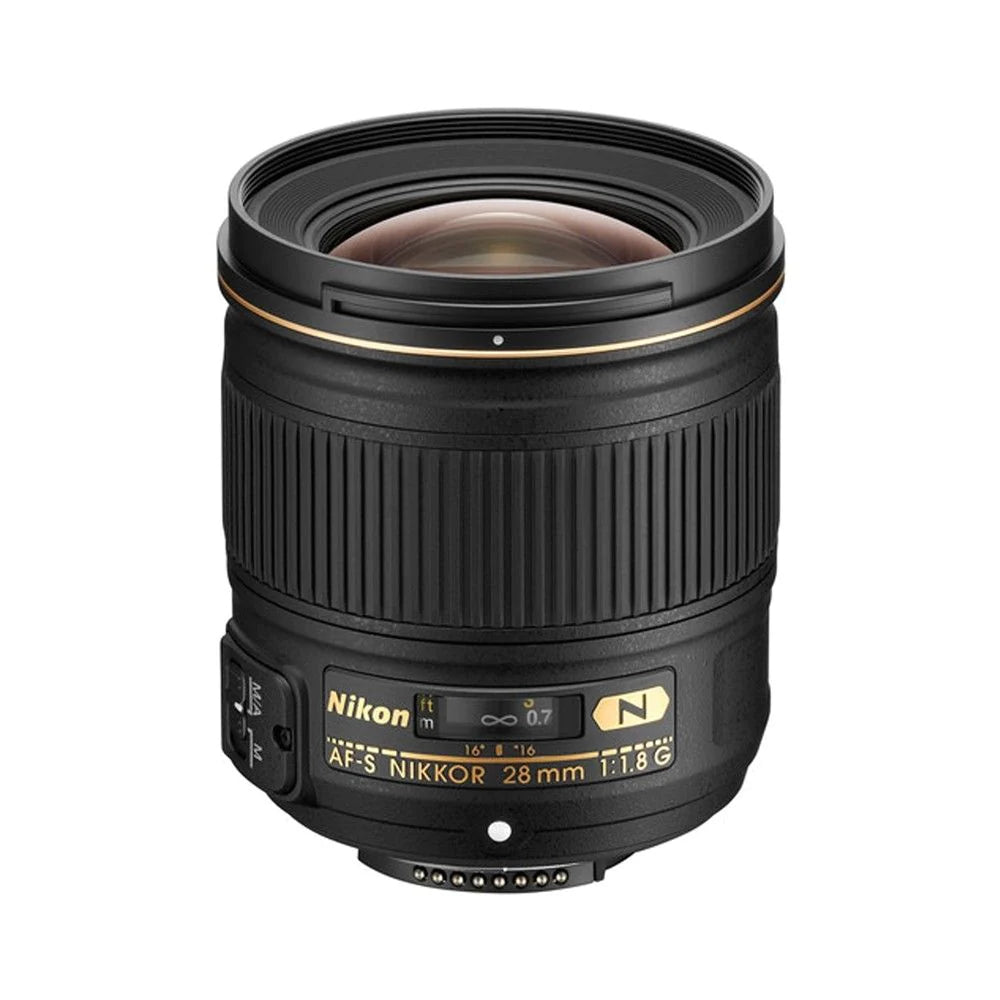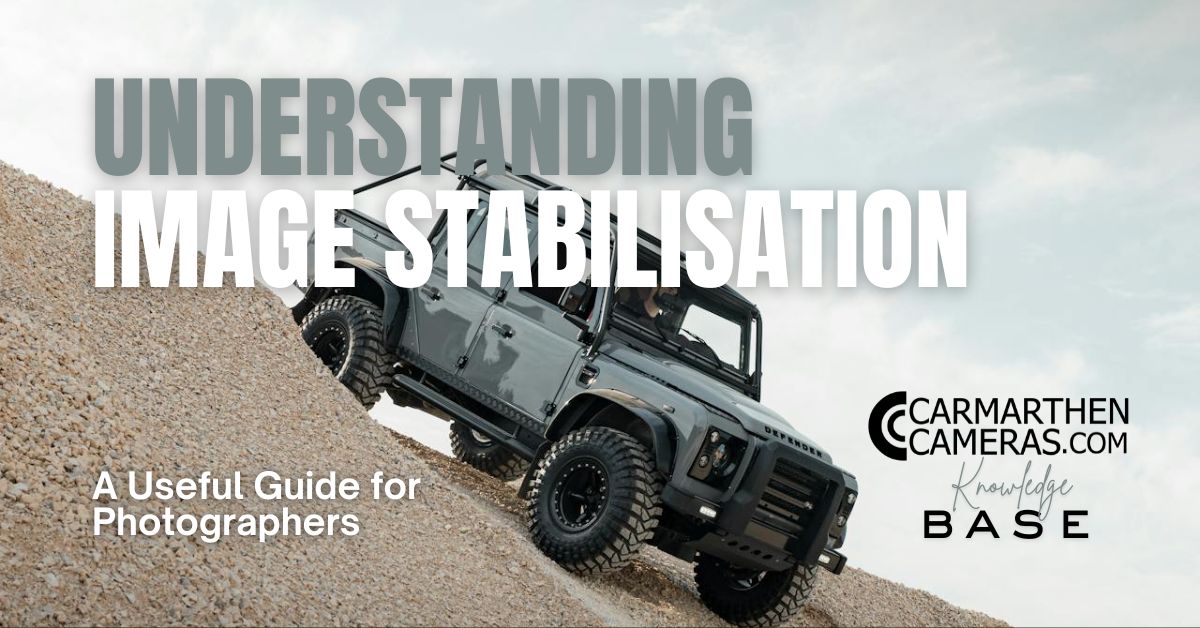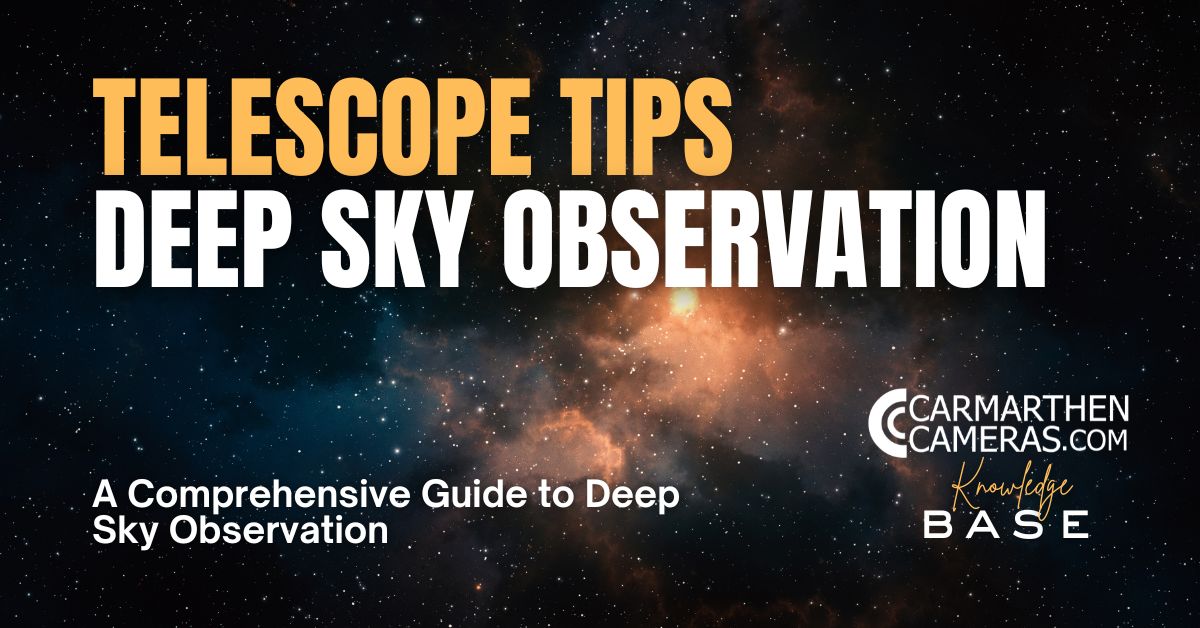Product Description
Refurbished Nikon AF-S 28mm f/1.8 G Wide Angle Lens: High Performance in a Compact Design
The Nikon AF-S NIKKOR 28mm f/1.8 G is a highly flexible wide-angle prime lens designed for FX-format F-mount cameras. Known for its broad field of view and bright f/1.8 maximum aperture, this lens is perfect for photographers who need excellent performance in low-light conditions while maintaining control over depth of field for subject isolation. Compact and lightweight, this lens balances versatility and high performance, making it an ideal choice for landscapes, street photography, and environmental portraits.
Key Features at a Glance:
- F-Mount Lens: For FX-format cameras, also compatible with DX models.
- Maximum Aperture: f/1.8
- Minimum Aperture: f/16
- Lens Elements: Two aspherical elements
- Coatings: Nano Crystal and Super Integrated Coatings
- Autofocus System: Silent Wave Motor (SWM)
- Diaphragm: Rounded 7-blade
- Focus: Rear focusing system
Exceptional Wide-Angle Performance
The Nikon AF-S 28mm f/1.8 G offers a 28mm focal length, which provides a wide-angle perspective that’s ideal for capturing sweeping landscapes, architecture, and detailed environmental portraits. When used with DX-format cameras, it offers a 42mm equivalent focal length, making it versatile for both wide and semi-standard shooting.
Bright f/1.8 Maximum Aperture
A key strength of this lens is its bright f/1.8 aperture, which allows photographers to shoot confidently in low-light conditions without the need for flash or high ISO settings. The wide aperture also enhances control over depth of field, making it perfect for selective focus techniques and creating a smooth, creamy bokeh in out-of-focus areas.
Advanced Optical Design
To achieve sharp and accurate image quality, the lens includes two aspherical elements, which help to suppress spherical aberrations and distortion. This ensures high levels of sharpness and even illumination across the frame. Additionally, Nano Crystal Coat and Super Integrated Coatings are applied to the lens elements, which help to minimize flare and ghosting, even in challenging lighting conditions. This results in images with improved contrast and more accurate colours.
Silent Wave Motor for Fast Autofocus
The lens is equipped with Nikon’s Silent Wave Motor (SWM), which enables fast, precise, and quiet autofocus. This feature is particularly useful when shooting video, as it ensures smooth and silent focusing without disturbing your subjects. The lens also offers full-time manual focus override, allowing you to fine-tune focus at any time.
Rear Focusing System
The rear focusing system means that only the rear lens group moves during focusing. This not only maintains the lens's overall length during focusing but also improves focusing speed, making the lens more efficient when capturing moving subjects or spontaneous moments.
Rounded 7-Blade Diaphragm
For photographers seeking creative depth-of-field control, the rounded seven-blade diaphragm ensures smooth and natural bokeh, making subjects stand out beautifully against softly blurred backgrounds. This is ideal for portraiture or any composition requiring subject isolation.
Compact and Versatile
Despite its advanced optical technology, the Nikon AF-S 28mm f/1.8 G is compact and lightweight, making it easy to carry around for extended shooting sessions. The refurbished model offers exceptional value, combining the latest Nikon technologies with a budget-friendly price.
Whether shooting stills or videos, this lens is a versatile and high-performance choice for photographers seeking to capture sharp, vibrant images in a variety of lighting and environmental conditions.
Payment & Security
Your payment information is processed securely. We do not store credit card details nor have access to your credit card information.

